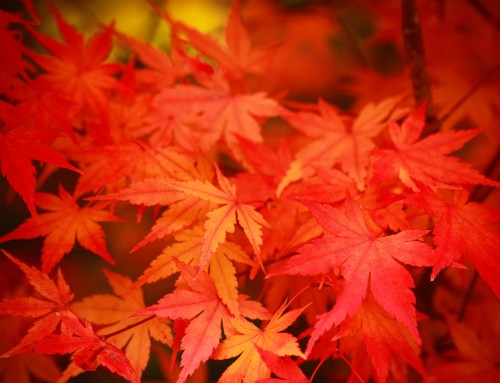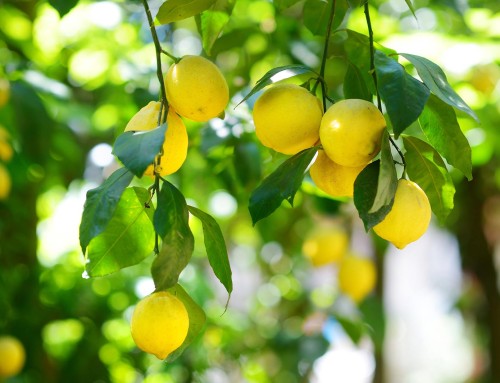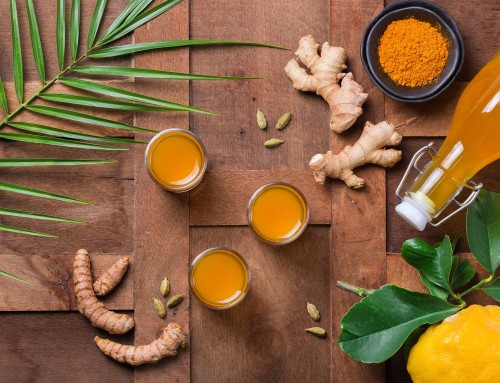Taking Care of Toxins with Maharishi AyurVeda
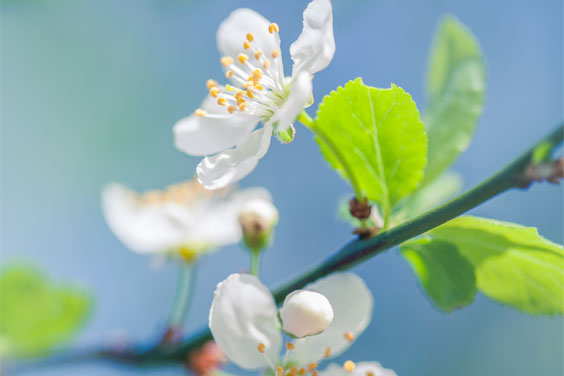
Ayurveda distinguishes three kinds of toxins called ama, amavisha & garavisha
Ama
The most common type is ama, which is the sticky waste product of incomplete digestion that builds up in the digestive tract when your digestion is either weak or overloaded with the wrong foods. If ama is not cleared from the body and continues to build up, after some time it can leave the digestive tract and start circulating throughout the body. Once it settles in an area of the body, it can aggravate the doshas or subdoshas, causing an imbalance in that area of the body.
Amavisha
If the causal factors are not addressed, and ama continues to sit in one place in the body, then ama becomes reactive and mixes with the subdoshas, the dhatus (body tissues), or malas (waste products such as urine). When it mixes with these parts of the physiology, it becomes amavisha, a more reactive, toxic type of ama.
Garavish
The third type of toxins, known as garavisha, are those we would today call environmental toxins. Environmental toxins come from outside the body and include pesticides and chemical fertilizers in food, as well as preservatives, additives and genetically engineered foods. Food that has gone off and is filled with harmful bacteria also falls into the garavisha category. Other garavisha toxins include arsenic, lead, asbestos, and many of the numerous other chemicals used in the household and industry today.
Detecting toxins in your body
An expert trained in Maharishi AyurVeda can tell if there are toxins in your body through nadi vigyan, or Ayurvedic pulse diagnosis. If your pulse is very slow and sluggish, it’s a sign that there are toxins in the body. It is recommended that one have a check up every season, and at least once a year, to see whether toxins are building up and to take the necessary action. The Ayurvedic expert can determine which type of toxin is in the body and where it is located. This is very important, because the treatment will be different depending on the type of toxin and where it has settled.

The signs of ama build up
If you have a heavy feeling in your body, if your joints are stiff, if your tongue is coated when you wake up in the morning, if you have an unpleasant body odour, if you feel dull and sleepy after eating, if your mind is foggy these are all symptoms of ama in the body.
Diarrhoea, constipation, joint pain, sadness, dullness, lowered immunity, frequent colds and flu are all health problems that can be caused by ama. These symptoms are caused because ama clogs the channels of circulation in the body.
Ama can prevent nutrients from flowing to the cells, organs and brain or it can clog the channels that carry waste from the cells and tissues, resulting in a toxic build-up.
The signs of amavisha
When ama settles in one place for a long time, it disturbs the subdoshas and eventually, if the person doesn’t stop the actions that are causing the imbalance, it becomes amavisha. Amavisha often mixes with the subdoshas and causes disease.
For instance, if ama settles in the chest, the subdosha of Shleshaka Kapha can get disturbed there, and if Shleshaka Kapha mixes with ama, it causes a type of amavisha called shleshma. Shleshma is a really, thick, yellow-coloured, nasty sort of toxin, and when it settles in the lungs, it becomes a fertile ground for bronchial infection.
Once amavisha (such as shleshma) is present in the body, disease symptoms usually follow. Symptoms can also result when amavisha mixes with the dhatus (body tissues). The symptoms will vary depending on the dhatu involved. For instance, when amavisha mixes with Rasa Dhatu (the nutrient fluid), the symptoms may include diarrhoea, loss of appetite, and a feeling of being overheated.
When amavisha mixes with Rakta Dhatu (blood plasma), it creates different types of skin diseases, such as psoriasis, eczema, or severe acne. Amavisha can mix with any of the other five dhatus and the seven waste products (malas), creating different symptoms depending on which dhatu or mala it is mixing with.
If it is not corrected, over time amavisha can cause diseases such as kidney dysfunction or a hyperactive liver. Depending on where amavisha is located, it will create different effects mental, emotional or physical. Coronary heart disease, for instance, is caused by amavisha blocking the coronary artery. Wherever it settles, it causes problems.
You could say that the symptoms caused by ama are more general, while the symptoms caused by amavisha are more specific and severe. But both can cause problems with immunity, as can garavisha.
The signs of garavisha
The signs of garavisha will vary depending on the type of toxin that’s lodged in the body. They can range from lack of taste in the mouth to dizziness, skin eruptions, rashes, excessive body heat, heart palpitations, darkened skin patches, fatigue and heaviness in the body.
Sometimes it is very difficult to identify the specific toxin that is causing the symptoms, because there are hundreds of chemicals and environmental toxins that a person could be exposed to. If you suspect that you have been exposed to environmental toxins, it’s important to consult an expert in Maharishi AyurVeda right away.
Your physician may recommend a blood test. In fact, many people today do have high levels of mercury and lead in their systems but there are safe and natural treatments for eliminating these heavy metals and toxins from your body.
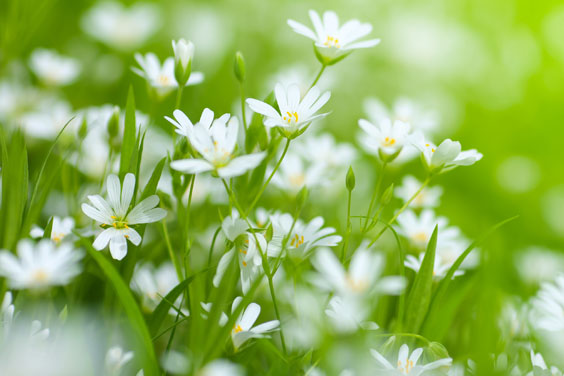
Avoiding environmental toxins
Environmental toxins are all around us in today’s world, so it can be complicated keeping away from them. However it is wise to be alert to the main sources and know how to control your exposure to them.
Water: consider filtering your water, reverse osmosis being an effective method. Otherwise drink bottled spring water. Inexpensive carbon purifiers can be attached to your showerhead to remove the chlorine or invest in a whole-house carbon filter to purify all the water in your home.
Mercury: can be found concentrated in fish and in tooth fillings. Non-toxic composite fillings can replace the latter.
The levels of pesticides in food in UK are generally well controlled but beware of non-organic imported fruit and vegetables. It may be wise to wash these with a mild soap.
Eating whole, natural foods rather than processed foods is another important way to avoid the preservatives, food additives, food colourings etc.
Levels of pollutants can be higher in your home than outside due to the use of many synthetic building and furnishing materials and cleaning products. So give your house a good airing every day.
Tests by NASA have shown that through their natural process of photosynthesis, common houseplants remove a variety of pollutants from the air, especially gases such as carbon monoxide, formaldehyde and benzene. Philodendrons, spider plants, scheffleras, chrysanthemums, ferns, and dracaena are all excellent air filters but you will need several medium-sized plants per room for optimal air purification.

Avoiding the causes of ama and amavisha
Ama is the waste product of incomplete digestion, so any dietary or lifestyle habits that disrupt digestion can cause ama and if continued can lead to amavisha.
Dietary factors
If you eat foods that are too heavy to digest, such as fried foods, hard cheeses, meats, leftovers, junk foods, processed foods, and rich desserts, these can overload your digestion and cause ama to form.
Cold foods and drinks, such as ice cream, ice water and foods straight from the refrigerator, are hard to digest, since cold temperatures reduce the digestive fire.
How much food and the type of food you can easily digest depends on your digestive capacity. Digestion can be weak, strong, or irregular, depending on your body type or imbalances. If your digestion is weak or dull (a characteristic associated with Kapha dosha), and you eat too much food or food that is too heavy for your digestive system, you’ll form ama.
Someone with a strong digestion (associated with Pitta dosha) will be able to eat larger quantities and richer foods without forming ama. A person with an irregular digestion (associated with Vata body type) will find that their appetite and digestive ability fluctuates sometimes it’s strong and sometimes weak.
You need to adjust the quantities of food you eat and dietary habits to suit your digestive type. Digestion also fluctuates according to the seasons, and if you don’t adjust your diet and lifestyle when the weather changes, you may form ama.
Daily routine
Digestion can be strengthened by good eating habits.
For instance, eat at the same time every day; take your main meal at noon when the digestion is strongest; wait until the previous meal is fully digested.
An irregular daily routine can also disrupt your digestion and cause ama.
Mental, emotional and physical stress is another cause of incomplete digestion and ama. If you’ve ever tried eating when you’re upset, and felt the stomach pains afterwards, you know why this is so.
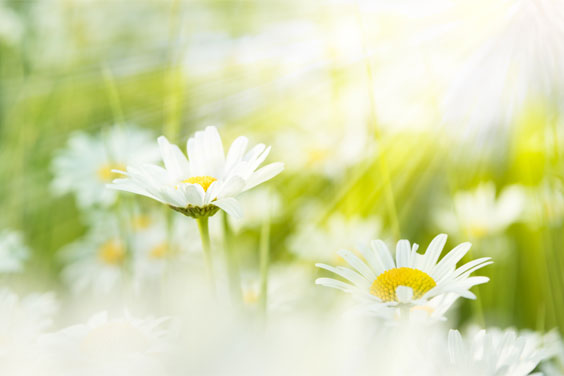
Mental and emotional stress
Emotional imbalance is often associated with an imbalance in Pitta dosha, and results in toxins in the form of Pitta-charged ama and amavisha.
For high-Pitta people, agni is always high, which is generally a good thing. But if that person is under emotional stress (or is eating food or living a lifestyle that aggravates Pitta) the strong Pitta quickly goes out of balance, creating a reactive kind of ama.
Those who experience mental stress also create more ama, because mental stress throws Vata out of balance. When Vata is out of balance, digestion becomes uneven, meaning that it is sometimes high and sometimes low, and creates ama.
People with a Vata body type or imbalance are especially vulnerable to this type of stress and this cause of ama. Mental and emotional imbalances can also be caused by toxins.
When any kind of toxin ama, amavisha, or garavishaclog the mental channels of communication, then the heart and mind no longer work in coordination with each other, because the channels of communication between them are blocked. This creates mental and emotional imbalances.
Toxins in the mental channels might cause lack of confidence, confusion, anger, and difficulty in making decisions, constant changing of decisions already made, desperation, mental weakness, and even minor changes in personality.

Getting rid of internal toxins
Ama reducing diet
If a person has simple ama it’s generally possible to remove it from the body by enhancing or balancing agni, the digestive fire. First of all, it’s important to begin an ama-reducing diet. This is a simple diet, consisting of warm, freshly-cooked whole foods that are light, easy to digest, and are suitable for the person’s body type and season.
The ama -reducing diet includes fresh, organic vegetables; sweet, juicy fruits; whole grains such as barley, rice, millet, rye, quinoa and amaranth; and easily digested proteins such from the small pulses e.g. mung dal and lentils.
Lassi – a drink made in the blender with one part freshly made yogurt, three parts water, with salt or honey for flavour is an excellent digestion-booster to drink after a meal because it contains acidophilus, a friendly bacteria that aids digestion.
Cooked leafy greens such as chard and kale are especially good for improving elimination and helping to detoxify the body. The vegetables and grains should be cooked with tasty spices that are suitable for your body type and the season, such as Maharishi AyurVeda seasoning blends
You can make your own detoxifying spice mixture from turmeric, coriander and fennel. Turmeric is an excellent spice to rid the body of ama, amavisha and garavisha, but should always be taken mixed with other spices rather than alone. See also the footnote *.
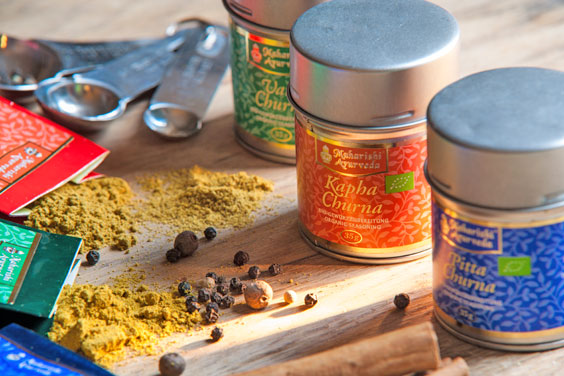
Detoxifying Spice Mixture
(this is the same formula as our Digestive Spice Mix)1 part turmeric
2 parts ground cumin
3 parts ground coriander
4 parts ground fennel
When you are cooking a meal, place a small amount of ghee in a frying pan and heat on medium. Add one teaspoon of spices per person. Saut spices until the aroma starts to be released (but be careful not to burn). Add steamed vegetables, mix lightly and saut together for one minute. Add salt and black pepper to taste. Or you can saut the spice mixture in ghee and drizzle on vegetables or grains.
Avoid all of the foods that we mentioned earlier as a cause of ama fried foods, heavy foods such as aged cheese, meat, rich desserts anything that is difficult to digest should be left out of your diet. Avoid eating or drinking anything cold. Drinking warm water throughout the day is a good way to flush out ama and toxins of all kinds, especially if you add detoxifying spices to make a tea.
Detoxifying Tea
Boil two litres of water in the morning,
Add 1/4 tsp. whole cumin, 1/2 tsp. whole coriander, 1/2 tsp. whole fennel,
let steep for ten minutes with the lid on,
Strain out the spices and pour water into a thermos and sip throughout the day.Start fresh by making a new batch of tea in the morning.
Ama reducing lifestyle
Avoid the ama causing factors mentioned above and favour an Ayurvedic routine early to bed (by 10pm) and early to rise (by 6am). This is important because going to sleep early helps your body to cleanse and rejuvenate itself.
Daily exercise that is suitable for your body type will stimulate digestion and help cleanse the body of toxins. It’s also important to manage your stress, and to have a job that you enjoy and is not too taxing for your body type. Everyone can benefit from spending time each day practicing meditation to remove mental, emotional and physical stress. We recommend Transcendental Meditation.
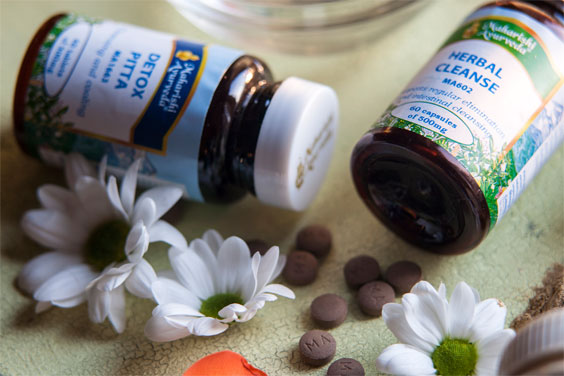
Herbal detoxifiers
Maharishi AyurVeda offers a range of detoxification products
- Triphala with Rose (MA505) is an excellent herbal formula for supporting regular bowel movements.
- Genitrac (MA2) helps flush out ama from the genito-urinary tract.
- Detox (MA1010) and Detox Pitta (MA1663) are both effective in removing toxins from the liver, blood, sweat glands and elimination system.
If your immunity is low due to toxins, Detox Pitta is recommended. It contains two excellent detox herbs: Katuki and Gulancha Tinospora. They support the liver, the most important organ for detoxification.
Detox is faster acting, but one has a Pitta imbalance Detox Pitta is better because it first pacifies the reactivity of Pitta dosha before flushing out the toxins.
Removing amavisha and garavisha
An ama reducing diet, lifestyle and herbal formulas will help to remove both amavisha and garavisha but it is important to consult a physician trained in Maharishi AyurVeda. Depending on where the amavisha is located, and how advanced the symptoms or disease, the physician will also prescribe a specific diet, daily routine and detox programme.
Coriander leaf & Holy Basil
Coriander leaf (cilantro) is a safe way to begin purifying mercury and other garavisha toxins from the body. You can eat cilantro chutney with holy basil as an addition to your diet. The cilantro helps remove heavy metals, and the holy basil (also known as tulsi) is helpful in eliminating amavisha and garavisha. If you grow it in your home it helps purify the air as well.
Coriander leaf Chutney
8 tsp. chopped Coriander leaf
1 tsp. shredded ginger
1/2 tsp. lime or lemon juice
1/2 tsp. chopped holy basil leaf
Add just a little water and blend together to a thin paste
Add salt to taste.
Herbal supplements for removing amavisha and garavisha
Many of the same products that eliminate ama will also be helpful in eliminating these two types of toxins. Detox (MA1010), Genitrac and Triphala will help with all three types of toxins, so these may be part of an ayurvedic treatment program.
An Ayurvedic expert may also prescribe more specific herbs that are suited for your situation. But, as mentioned above, it takes great care and expertise to remove amavisha from the body, because amavisha is reactive. If the wrong method is used, it could cause the channels or tissue where it is located to become inflamed, or the skin to break out. If you feel that you have amavisha, consult an ayurvedic expert who can take your pulse and determine which organ, channel, or body tissue the amavisha is located in, how long it has been lodged there, and whether the amavisha has mixed with Vata, Pitta or Kapha. By knowing this, they can pacify the reactivity first, and then purify the toxins.
For garavisha, it’s also important to be tested to determine the specific environmental toxin that is causing the problem. Then the ayurvedic expert can design a specific treatment program to remove that particular toxin that includes diet and herbal formulas.

Maharishi Panchakarma
Maharishi Panchakarma is a key element in the Ayurvedic detoxification. It is a series of gentle but intensive procedures that includes massage, mild internal cleansing, and steam baths that can be extremely effective in ridding the body of all three types of toxins. This programme, available at Maharishi Vedic Medical Centres around the world, is prescribed and supervised by an Ayurvedic expert according to the individual needs of each person. Maharishi Panchakarma is the only system that is known to reduce the level of pesticides in the blood without side effects.
Spring Cleaning
It is common to feel heavier and more in need of cleansing in spring. This is because the toxins that are already in the body start to display their symptoms then. If you don’t follow the proper seasonal diet and routine during the first two months of winter (November and December), the body can accumulate more toxins then. The channels become clogged, and at the same time because of the cold temperatures, ama and amavisha gets stuck or “frozen”in the walls of the channels.
At this point there will not be as many symptoms of ama. But during the second two month period of winter, January and February, there is a slight warming effect, and the frozen amavisha and ama starts to melt.
The ama tends to flow into the sinuses, the lungs, or the joints, wherever there is an empty space. This can make your joints may feel stiff, your mind dull, or you may feel tired or heavy. Your immunity may be weakened, and you may become sick with a cold, the flu, allergies, asthma or bronchial infections.
Because these toxins are naturally melting in spring, it’s the best time to detoxify. The body is already in the mode of eliminating toxins, so it’s a good time to support the body in that role. To detoxify in the spring, we recommend that for two to three months you take Detox or Detox Pitta, with Triphala with Rose or Herbal Cleanse, drink plenty of Detoxification Tea mentioned earlier, follow the ama-reducing diet, and follow the ama-reducing ayurvedic routine mentioned earlier.
If you can only undergo Maharishi Panchakarma once a year, spring is the best time. All of these measures will help you to clear your body of toxins at this optimal period, paving the way for better health for the rest of the year.
The importance of a balanced detox programme
The liver is the body’s main purifying organ. Everything you take in through the digestion gets processed by the liver and then transformed into blood. This includes all three kinds of toxins those created by the body and the environmental toxins such as pesticides and chemicals in food.
But if the toxins build up and are beyond the capacity of the liver to purify or if the liver is weak then the toxins are passed on to other parts of the body. That’s why every detoxification program of Maharishi AyurVeda starts by strengthening the digestive system, so the liver does not get overloaded.
Supporting liver function causes toxins to be eliminated through the large intestine, so it’s important to supplement any liver cleansing by cleansing the bowel as well.
All of the recommendations made earlier including the diet, lifestyle tips, Maharishi Panchakarma and our herbal detoxification products contain three important steps. These are: strengthening the digestion, cleansing the liver, and cleansing the bowel. If any one of these steps were left out, the toxins would not be completely eliminated and further imbalances would be the result.
- The first step is to strengthen digestion through the ama-reducing diet and lifestyle factors. This helps to prevent ama, amavisha or garavisha from mixing with the nutrient fluid and the blood plasma and prevents the liver being overwhelmed.
- Secondly, the liver must be cleansed. The liver itself should be cleansed each spring, so it has more capacity and flexibility in filtering toxins. That’s why Detox and Detox Pitta are recommended, as well as eating more leafy green vegetables and small amounts of spices such as turmeric.
- Finally, a detox program includes cleansing the bowel. That’s why taking Triphala or Herbal Cleanse is an important part of a home detoxification program. You can keep your elimination running smoothly on a daily basis by eating prunes and figs cooked with an apple for breakfast. A healthy elimination means having a bowel movement once or twice a day.
If you do this, over time you will find that less and less toxins build up in your body, and you will enjoy more energy, clarity and lightness. Once you have cleansed the body the Maharishi AyurVeda rasayanas, especially Amrit Kalash, become much more effective at enlivening the deep inner intelligence of the body and bliss of mind that are your natural birthright.
Important note * If there is any history of garavisha or amavisha in the liver, or if there is a blocked channel in the bile duct, turmeric can cause problems by detoxifying too quickly for these conditions. If these conditions are present be sure to consult your health advisor physician first before adding turmeric to your diet.
DISCLAIMER: The information in this document is presented for the sole purpose of imparting education on Maharishi AyurVeda and neither the information nor the products are intended to diagnose, treat, mitigate, cure or prevent any disease. If you have a medical condition, or are pregnant or lactating, please consult a health professional and it is recommended that you speak with your physician before making significant changes to your diet or routine.

